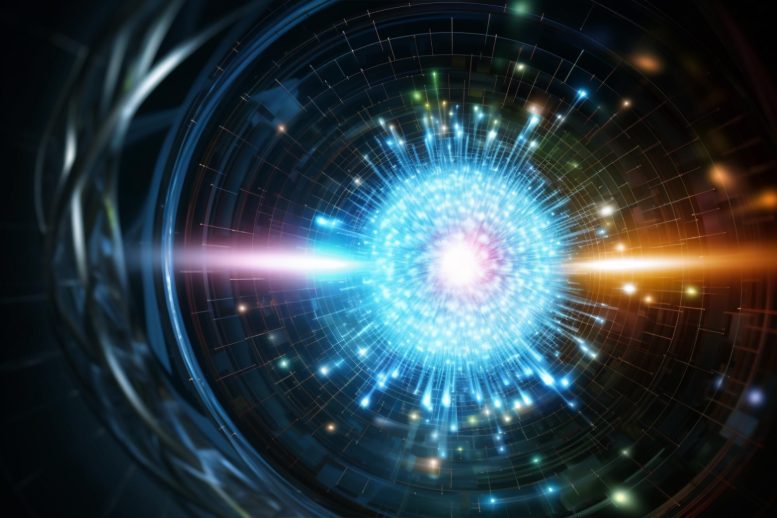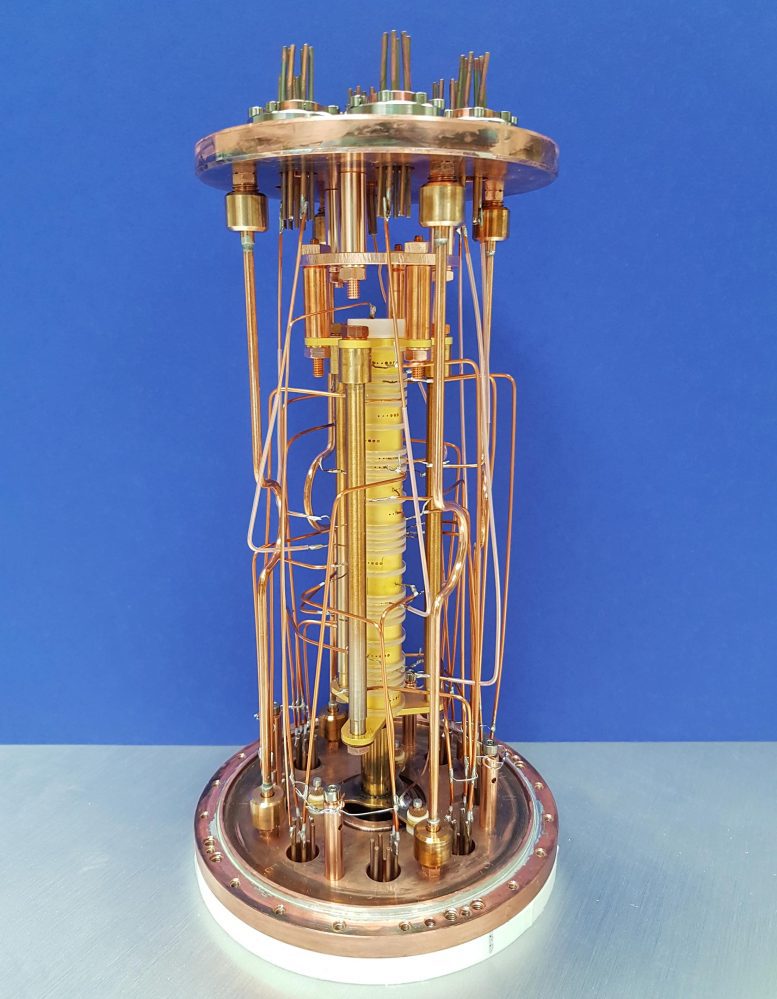
In the 1930s, neutrinos were proposed to explain the missing energy and momentum in nuclear beta decay, and were eventually confirmed in 1956. These elusive particles hardly interact with matter and travel through us from cosmic sources like the sun. Recent research has revealed that neutrinos change between types and have mass, conflicting with previous theories and hinting at undiscovered physics. Credit: SciTechDaily.com
The discovery and continuous investigation of neutrinos have significantly changed the fundamental ideas of particle physics, underscoring the particles’ mass and questioning the accuracy of the standard model.
In the 1930s, it was discovered that the energy and momentum balance is not accurate in the radioactive beta decay of an atomic nucleus. This led to the proposal of “ghost particles” that carry away energy and momentum unnoticed. In 1956, experimental proof of such neutrinos was finally obtained.
The issue: neutrinos only interact with other particles via the weak interaction, which is also involved in the beta decay of an atomic nucleus. As a result, hundreds of trillions of neutrinos from space, especially the sun, can pass through our bodies every second without causing harm. Detection of extremely rare neutrino collisions with other particles of matter requires large detectors.
Neutrino Oscillations and the Challenge to the Standard Model
Solar neutrinos revealed another groundbreaking finding: the three known types of neutrinos can transform into each other. However, these “neutrino oscillations” had a significant impact on the understanding of particle physics. It was previously believed that neutrinos, like photons, had no rest mass. This would align with the standard model of particle physics, the best explanation of the particle world so far. However, the oscillations indicated a rest mass for neutrinos — further evidence that new physics beyond the standard model must exist.
Determining Neutrino Mass through Beta Decay
Knowing the exact rest mass of the neutrino would open the door to the unfamiliar realm of new physics. Unfortunately, a neutrino cannot simply be put on a scale. This requires extremely intricate experiments on technically feasible physical processes involving neutrinos.
“One method is the beta decay of tritium,” explains Christoph Schweiger, a PhD student at the Max Planck Institute for Nuclear Physics in Klaus Blaum’s department.
In this process, one of the two neutrons in the heavy hydrogen decays into a proton and emits an electron and a neutrino, transforming the atom into lighter helium. The KATRIN experiment at the Karlsruhe Institute of Technology
measures the weight of this process.
“The alternative approach is the electron capture of the artificial isotope holmium-163,” Schweiger continues.
Here, the atomic nucleus captures an electron from the inner electron shell, converting a proton into a neutron and producing the element dysprosium-163. This also releases a neutrino, among other things.
The international ECHo collaboration, in which the Heidelberg scientists are involved, is trying very hard to measure this decay process with extreme precision in terms of energy. According to Einstein’s E = mc2, mass and energy are the same thing, so measuring energy is similar to weighing masses.
ECHo measures the total energy released in this decay very accurately, which is the maximum of the Q value minus the rest mass of the neutrino released. It does this by incorporating the holmium-163 isotope into a layer of gold atoms.

PENTATRAP consists of five Penning traps arranged one above the other. Ions in the excited quantum state and in the ground state are measured in these identically constructed traps to minimize uncertainties.
Advanced Techniques in Mass Measurement
“However, these gold atoms could have an influence on holmium-163,” explains Schweiger. “It is therefore important to measure the value of Q as precisely as possible using an alternative method and to compare it with the calorimetrically determined value in order to detect possible systematic sources of error.”
This is where the Heidelberg pentatrap experiment and Schweiger’s doctoral thesis come into play. Pentatrap consists of five so-called Penning traps. In these traps, electrically charged atoms can be captured in a combination of a static electric and magnetic field. These ions perform an intricate “circle dance,” which allows their mass to be determined with extreme precision.
“With an Airbus A-380 with a maximum load, you could use this sensitivity to determine whether a single drop of water has landed on it,” says the physicist, illustrating the capabilities of this super scale.
Implications of Neutrino Mass Measurements
In principle, a Penning trap works like a swing. If you place two children of different weights next to each other on two swings of the same type and push them equally hard, you will gradually observe a shift in the swing frequencies. This can be used to calculate the difference in weight between the two children. In the case of the pentatrap experiment, this is the difference in mass between a holmium-163 ion and a dysprosium-163 ion.
In addition, the faster both children swing, the sooner the result is obtained, which is also much more accurate for the same observation time than for slow swinging. For this reason, the team removed 38, 39, and 40 electrons from the “highly charged” ions in three different series of measurements, which made their “circle dance” considerably faster.
“If everything works, a measurement will only take a few weeks,” says Schweiger.
The Future of Neutrino Mass Research
From the differences in mass as a result of various frequency measurements, via E = mc2 the Heidelberg scientists were finally able to determine a Q value for electron capture that was 50 times more precise than before.
“The contribution of the three theory groups, including Christoph Keitel’s group here at the institute, was just as important as our measurement,” emphasizes Schweiger.
Another factor that affects the Q value is the energy trapped in the remaining electron system of a highly charged ion, which adds to the difference in frequency between the two ions. Since the large ion is a multi-particle system, the calculation was quite complex. Surprisingly, the calculations resulted in almost exactly the same Q values for the three measured charge states with 38, 39, and 40 electrons removed, indicating that systematic uncertainties in experiment and theory could be excluded. This has important implications for the neutrino masses, Schweiger emphasizes enthusiastically.
KATRIN set the most accurate upper limit on the neutrino mass to date at 0.8 electron volt per speed of light squared, corresponding to a minuscule 0.0000000000000000000000000000000000014 kilogram!
This magnitude is 10.–36 This equates to the weight ratio of four raisins to the sun, serving as only an upper limit.
The analysis of the estimated mass distribution in the universe even results in a significantly lower upper limit of the neutrino masses, at 0.12 electron volt per speed of light squared.
“However, this analysis is exceedingly intricate and relies on the cosmological model used,” Schweiger notes.
In any case, it is evident that measuring neutrino weight presents extreme technical challenges. Given this context, the Heidelberg result represents a major advancement in unraveling the mystery of neutrino masses.
Reference: “Direct high-precision Penning-trap measurement of the Q-value of the electron capture in 163Ho for the determination of the electron neutrino mass” 19 April 2024, Nature Physics.
DOI: 10.1038/s41567-024-02461-9



